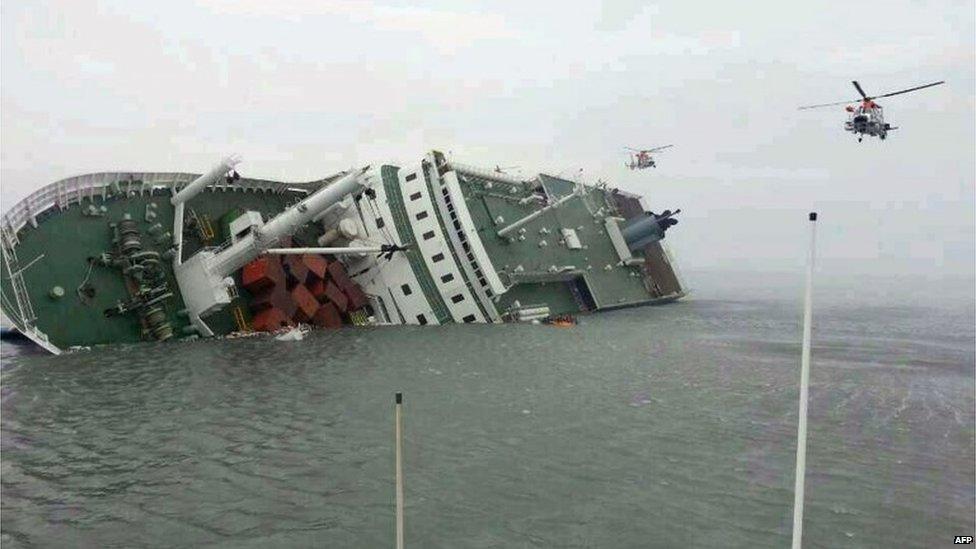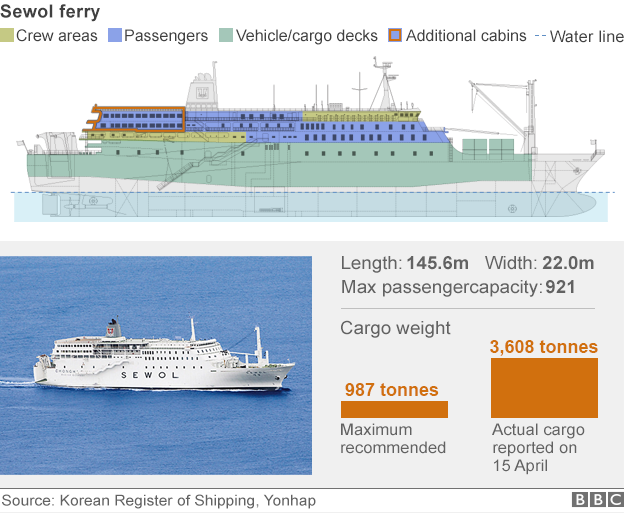Sewol ferry: South Korea appoints China salvage consortium
- Published

The South Korean government has signed a deal with a Chinese consortium to raise the wreckage of the Sewol ferry.
The ferry sank in April 2014, killing 304 people - most of them children.
The remains of nine people are yet to be recovered and their families campaigned for the ship to be raised.
The captain and several crew members have been given jail terms for failing to protect passengers, as was the captain of a coast guard vessel involved in the botched rescue effort.
The passengers included 325 pupils aged between 16 and 17 from who were on a school trip to the holiday island of Jeju when the ferry sank.
The wreckage will be salvaged by a consortium led by Shanghai Salvage. It will be raised by next July at a cost of $73m (£47m).
To recover any bodies remaining within the ship, engineers will enclose the wreck in two sets of netting so that the complete contents will rise with the vessel, the BBC's Evans in Seoul reports.
It will be the grisliest of tasks but also one of much political sensitivity, he adds.
In April South Korean President Park Guen-hye promised the vessel would be raised at the earliest opportunity amid intense public criticism of the government.
Investigators have said the ferry sank after an inexperienced crew member made too fast a turn. The combination of an illegal redesign and overload meant the ship was unstable.

The owner of ferry operator Chonghaejin Marine Co, Yoo Byung-eun, disappeared after the disaster and was eventually found dead.
The ferry sank in waters between 37 and 43 metres (121 and 141 feet) deep.
While salvage operations have been undertaken in deeper seas, the site of the Sewol is a channel subject to notoriously dangerous currents and heavy surface winds.
Two divers died searching for bodies inside the vessel last year.